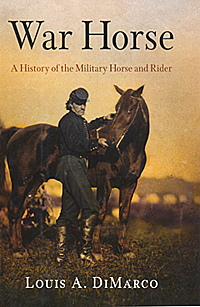 “For want of a nail, the shoe was lost; for want of the shoe, the horse was lost; for want of the horse, the rider was lost; for want of the rider, the battle was lost; for want of the battle, the kingdom was lost; all for the want of a nail.”
“For want of a nail, the shoe was lost; for want of the shoe, the horse was lost; for want of the horse, the rider was lost; for want of the rider, the battle was lost; for want of the battle, the kingdom was lost; all for the want of a nail.”
This 14th century proverb about cause and effect also harkens to the wellspring of horsemanship. World War I marked the end of the cavalry system, but techniques used by modern performance horse competitors have been honed by armies down through the centuries.
“Tom McGuane gave me a book written by a Greek general in 400 B.C. and he devoted one chapter to staying over the pivot point on your war horse,” cutting legend Buster Welch once told me, then added with a laugh, “And I thought I had discovered that.”
Welch made his discovery with Rey Jay in the late 1950s. Xenophon, sometimes referred to as the original “horse whisperer,” wrote his treatises “On Horsemanship
” and “The Cavalry General
” during the time of Socrates.
War Horse: A History of the Military Horse and Rider, by Louis A. DiMarco, is a fascinating march from ancient Assyria through WWII, detailing training techniques, the development and use of tack and equipment, as well as horse breeds and breeding systems.
Here is just a small sample of the many interesting facts to be found in War Horse:
Roman cavalrymen of the first century AD began wearing leather breeches to improve their security in the saddle and protect their legs.
A true test of horsemanship in a cavalry unit is control of its horses once they sense panic from mounts of fleeing units – something the Roman cavalry experienced when they were attacked by Goths at the Battle of Adrianople.
Stallions were the preferred mount for the Roman cavalry because of their boldness and aggressiveness to the point of even striking out with their front feet against infantrymen.
One result of the fall of the Roman Empire was the decline of controlled breeding of quality horse stock in Central Europe.
Medieval horse tournaments tested the skill and training of both knights and their mounts.
Nailed horseshoes became standard military horse equipment in tenth century Europe. In addition to protecting horses’ feet, they transformed hooves into deadly weapons against enemy infantrymen, and they enabled armies to travel greater distances.
The most valuable Medieval war horse was referred to as a destrier. It was led to the battlefield and mounted just before battle, in much the same way cutting horses were led to the roundup and used exclusively for sorting out cattle.
